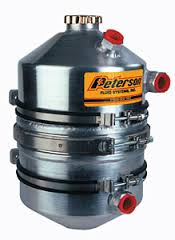

Sonic
-
Content Count
71 -
Joined
-
Last visited
Posts posted by Sonic
-
-
from what I've seen the stock semi-wideband is fine down to about 11.2:1 AFR
BUT
you have to apply a re-curve to the sensor to increase its accuracy as knightryder is correct in saying as stock with the stock calibration its accuracy isn't great away from stoich
and the issue I have with dyno / roller widebands is often they're poked into a tailpipe which is a long way from the engine so reading a cold exhaust mix and also its very difficult to get sufficient flow over the sensor for an accurate reading as most tailpipes are too large and diffuse a flow
if the roller dyno sensor is mounted into a small pipe and that pipe is poked a long way into the exhaust then this is a lot better but still suffers from a much colder gas mix so changing the accuracy of the reading
-
sorry but these things are just too big for me
compared to an '86 its a barge
and yes I have driven one
-
328.4 at the wheels I reckon
good luck
-
I'm guessing that you're removing the GDi injection system?
If so don't do it
-
On a stock car it's pretty pointless. If you have a well designed exhaust system , inlet mods etc then it becomes a different story. You won't always see huge peak gains but it's what can be done across the whole rev range which makes it beneficial.
Sorry I disagree
the stock map is poor and so massively conservative you can make some good gains by just putting to 'normal' values, its about 4 degrees away from knock on 98 gasoline and runs 10:1 target AFR , which is rich for a turbo car
this is often not true for an NA car but with the '86 you can make 10-12 bhp gain with no other supporting mods and replace the air filter with something not made of solid you can get a few bhp more than this
so a tune / stage 1 pack is excellent value on this car
-
hello
one of the best places for water injection is pre compressor
aim the jet at the centre nut to avoid eroding the compressor impeller blades
the water coming in pre-compressor will reduce the charge temp in the same way as post compressor injection but it will also mix really well due to the compressor and help seal the compressor blades to the hosuing and improve efficency
and yes a mix of water / ethanol is superior to just water on its own as the specific heat transfer coefficent is better and you'll avoid corroding engine parts with any water that condenses out of the airstream furhter down the pipe
-
you could use the gear dependent rev limit in ECUtek so have 7600 in 1st & 2nd and then tail it off for the taller gears, as its only very briefly seeing the high rpm in the lower gears
-
Thankyou Sonic,
I think the little 3 gallon tank pictured here will suffice and fits exactly with your spec?
Just one point though.. I will be using a Peterson 3 stage pump which also includes the pressure pump, so the engines inbuilt pump will be redundant. I will be selling my Reimax pump, Racer X sump and baffle plate as soon as this kit arrives. So, as you say, there will be one -16 hose running inside the car under vacuum and another right next to it returning oil to the tank from the scavenge and cooler, hardly 12 bar me thinks?? BUT, I will have 15 litres of oil to burn me and cover the track when it all blows up!!
blimey 3 gallons ?! thats plenty large, still you don't have to fill it right up with oil
I'd run it about 8 to 10 ltrs or so as too much oil will take ages to warm
but a big tank has the plus you can run a lot or air space at the top which will help with redcuing carryover and give the oil plenty of time to swirl around and de-aerate I'm assuming that you've got to modify / make a sump pickup for the pump?
-
I am impressed, Nige . .
.. the Samsonas is as Adrian's, so no dramas there - are you doing your own gearbox mount, or buying in?
But ... dry sumping? . . this is unknown territory. A huge (and unjustified) risk, in my opinion - you have no control over any element of the build and nothing is adjustable. There is no data on GT86 UK track/road use that qualifies this is safe - if it fails you don't just blow the engine, you WILL dump 7 litres of oil . . and with your current install program you will be scalded by seriously hot engine oil, lose control and cause a problem.
I can see no clear idea from you on catch tank/oil-water separation in your installation and, having reviewed the weblinks you provided, I would have safety/practical issues on this. With respect to your efforts to date they have focussed on chassis issues - you are not an engine/trans/race development specialist and this, in my mind, is a mega -step too far . .
Don't wanna curb your development ideas. But I could be the poor sod following you at TSS / Time Attack next year when you dump a shedload of oil when a hose blows at 12Bar . . and costs someone their life.
Reflect, please . . this turns fun into fear.
Spec K
come come, dry sumping isn't some dark art thats right at the bleeding edge
this build is a race car and as such requires a dry sump, especially on a flat engine which are more prone than inline or Vee configurations for oil hang up
as long as the tank volume is a good size with baffling and the entry point is tangential so the oil can swirl around the tank and de-aerate and the blow-by air can also be vented to the air space at the top of the dry sump tank so there's no need for a seperate catch can
also the hoses shouldn't be running at 12Bar unless something is seriously wrong
typical back pressures on a well designed system should be about 0.3 to 0.5bar of back pressure to the dry sump pump, the engen pressure pump is unchanged of course so internal oil pressure remains the same as stock and is contained within the engine
-
I think the main issue is the stock valve springs are pretty soft so I wouldn't be going past 7600rpm until these were replaced
-
I'd concur with the general opinion
the Toyota Nav is quite frankly rubbish
spend £80 on a garmin and you'll have somethign far superior
-
are you still twincharging Nigel or have you gone off that idea?
-
go ceramic coat every time, the reduction in engine bay temps is well worth it for reliability and keeping the air intake temps down, plus wrap has to be done carefully not to create any air pockets as this then superheats and melts holes in the exhaust
-
More power arf! arf! ( tim taylor reference)
too much is never enough, in my expierence anyway.
350Bhp in a road car seemed quite normal after about 3 weeks of Cerbera ownership
-
surely not? the amount of work thats gone in so far has been epic
-
sorry don't like it
its artificial, engines should need no gimmicks to sounds good, plus its extra guff to cart about that serves no real purpose
begone I say!
-
agree about the intake kits none of them do anything, apart from increase intake noise
just fit a decent filter in the stock airbox and you'll get the benefit
couple it with a re-map and you'll get quite a lot of bang for your buck
-
Yes, back on topic:
I'm interested in the relative merits of the positioning of the throttle: the Edelbrock (and Harrop, IIRC) with the feed running forward beside the blower putting the throttle body near the stock position, versus the Cosworth and Sprintex that put the throttle near the back of the blower......
Is it just a packaging/aesthetic choice, or is there more to it?
I think its more that the eaton unit used by edelbroack and harrop is a front feed article so you don't need the long pipe as the air ploughs straight into the charger
a nice option and one that probably wasn't available when Cosworth designed their kit and its not available at all on the sprintex
-
when I dropped mine ( about 25mm at the back , 30mm at the front) I had to fit camber bolts to the rear to get the camber back to stock as I do most of my driving on the roads and felt the 2.5 degrees I was getting on the back was a bit excessive
-
thats the other one
both the edelbrock and harrop do look good
interesting to see where they all will sit and how much the intake temps rise by, arguably a 1320 is overkill for a 2.0 ltr engine anyway as the bigger blower can't deliver more boost pressure than the 900, it just gets there quicker / lower down in the rev range
-
Not quite true Mark
you can buy the Cosworth stage 2 kit on its own without the stage 1.0
you just then need to sort out the tune yourself
-
another review has popped up in Car magazine
http://www.carmagazine.co.uk/car-reviews/toyota/cosworth-toyota-gt86-2015-review/
its certainly doing the rounds
-
To be honest as you already have the ohlins I'd perserve with them
they are really very good, but setting up needs an expert hand so perhaps ask Adrian or Steve Gugelemi to set it up for you
http://www.guglielmimotorsport.co.uk/
I've used Steve for many years on my TVR's and he really knows his stuff
-
Mansell '86 williams


Cosworth on the rollers
in Projects & Builds
Posted · Report reply
you're correct, you do have to have a standalone wideband running in paraell ( mounted a bit further down the pipe) to achieve the calibration
thats what I did anyway